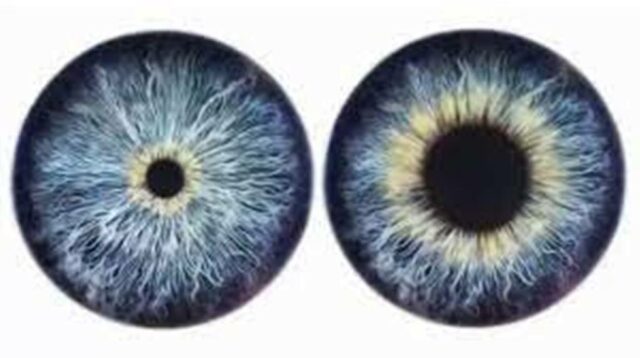Scientists at the University of California, San Diego have developed a smartphone app that can detect early signs of Alzheimer’s disease and other neurological conditions. The app uses the cell phone’s near-infrared camera to track changes in the size of a person’s pupils at a sub-millimeter level. These readings can be used to assess the cognitive condition of that person.
As technology evolves, the eyes may become increasingly useful as a means of diagnosing all kinds of diseases and conditions because, being transparent, they require much less invasive examination methods than other parts of the body. But even without technology it is possible to detect a number of health problems simply by looking into the eyes.

These are some of the warning signs:
Pupil size
The pupil responds instantly to light, becoming smaller in bright environments and larger in dim conditions.Slow or delayed responses in pupil size could indicate various illnesses that can include serious conditions such as Alzheimer’s disease, as well as the effects of medications and evidence of drug use.Dilated pupils are common in those who use stimulant drugs such as cocaine and amphetamines. Very small pupils can be seen in those who use heroin.
Red or Yellow eyes
A change in the color of the sclera (the “whites of the eyes”) could suggest that something is not right.A red, bloodshot eye could be caused by excessive alcohol or drug abuse. It could also be due to irritation or infection, which in most cases passes in a matter of days. If the color change is persistent, it could indicate a more serious infection, inflammation, or reaction to contact lenses or their solutions. In extreme cases, a red eye could indicate glaucoma, a disease that can lead to blindness.
When the sclera turns yellow, this is usually a very obvious sign of jaundice and a diseased liver.The underlying causes of jaundice vary widely. They include inflammation of the liver (hepatitis), genetic or autoimmune diseases, and certain medications, viruses, or tumors.
Red stain
A blood-red spot on the white of the eye (subconjunctival hemorrhage) can look scary and is always the result of a small, localized blood vessel that has burst.Most of the time there is no known cause and it goes away in a few days.
However, it could also be an indication of high blood pressure, diabetes, and blood clotting disorders that cause excessive bleeding.Blood-thinning medications such as aspirin could also be the cause, and if the problem is frequent, he or she might suggest having a doctor review your dosage.
Ring around the cornea
A white or gray ring around the cornea is often linked to high cholesterol and an increased risk of heart disease.It could also reveal alcoholism and is sometimes seen in the eyes of older people, which is why the medical name given to it is arcussenilis
Fatty lump
Sometimes the most alarming features that can appear in the eyes are actually the most benign and easy to treat.The pinguecula is a yellowish fatty lump that can appear on the white of the eye. It is a small deposit of fat and protein that can be easily remedied with eye drops or removed by a simple operation.
A pterygium (pronounced te-ri-gión) is a pink growth on the white part of the eye. It is not a sight hazard until it begins to grow on the cornea (the colored part of the eye). Fortunately, pterygium grow very slowly and, as with pinguecula, can be easily removed. In fact, they must be removed long before it reaches the cornea.If allowed to continue to grow, the pterygium can form an opaque “film” on the cornea that will obstruct vision.One of the main causative factors for both pinguecula and pterygium is believed to be chronic exposure to ultraviolet light from the sun.
Bulging eyes
Googly eyes can be part of a normal facial feature.But when the previously non-bulging eyes begin to bulge forward, the most obvious cause could be a problem with the thyroid gland and needs medical attention.A single protruding eye could be caused by an injury, infection, or, more rarely, a tumor behind the eye.
Puffy or twitching eyelids
The eyelids can also indicate many diseases. These are mainly related to minor conditions of the glands of the eyelids.A common condition is the stye or chalazion, which appears as a red lump on the upper and, less commonly, lower eyelid and is caused by a blocked oil gland.
A stye usually goes away on its own or with warm compresses. If it persists, it should be removed with a simple procedure. A twitching eyelid (ocular myokymia) may be caused by irritation, even hot flashes, and often feels much worse than it looks.In most cases it is perfectly harmless and can be related to stress, nutrient imbalance or excessive caffeine consumption.

